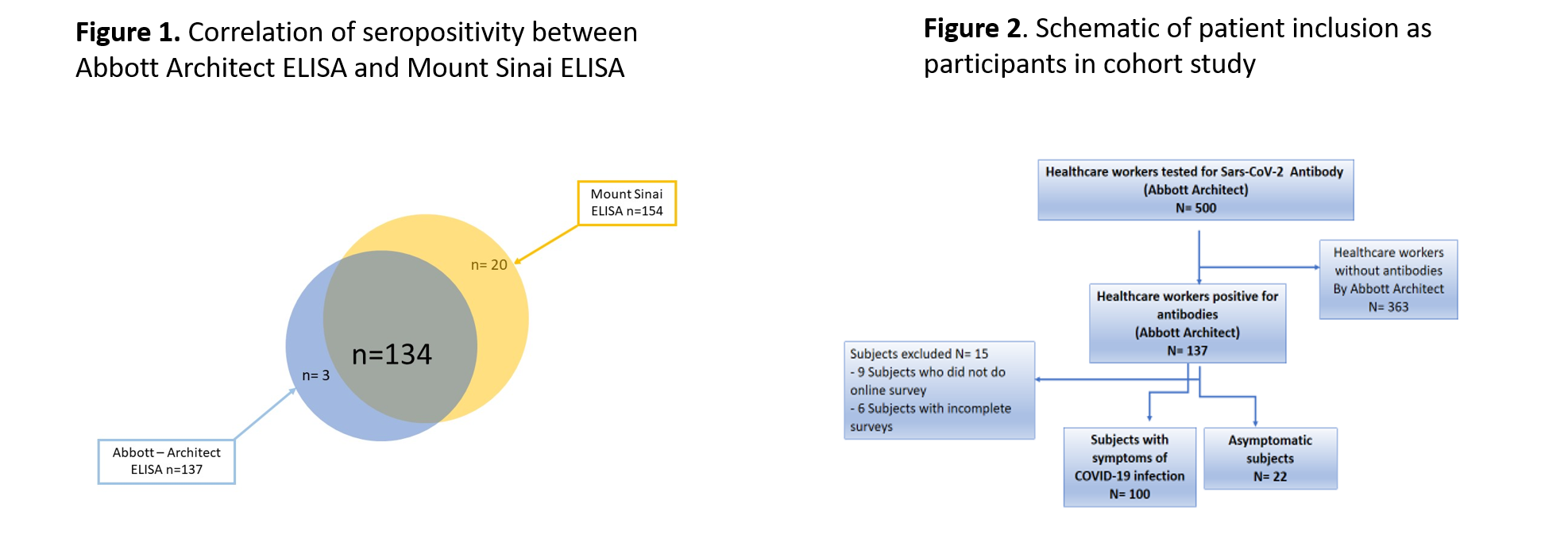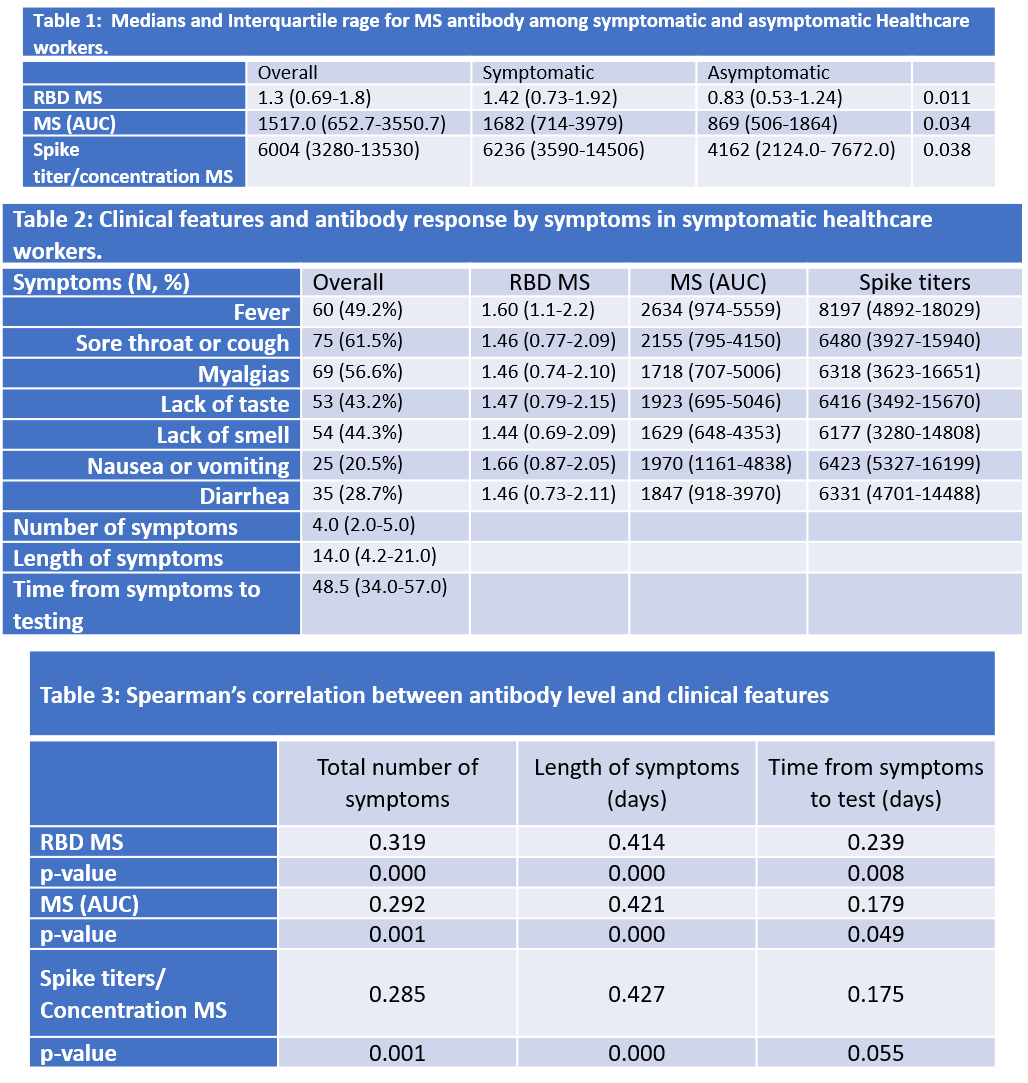Background: Data about seroprevalence of COVID-19 infections in US Health Care Workers (HCW) is limited. CDC reported that about 55% of SARS-CoV-2 PCR positive HCWs reported exposure at work, with most of them being minimally symptomatic or asymptomatic(1). This study characterizes the symptomatic/asymptomatic SARS-CoV-2 seropositive frontline HCW in our hospital and correlate clinical features with antibody concentrations.
Methods: Cross sectional study of seroprevalence was estimated by qualitative SARS-CoV-2 antibody (Abbott Architect), quantitative ELISA titers against the spike protein and virus neutralization (Mt. Sinai assay)(3) with NP swabs for SARS-CoV-2 PCR (Bio-Reference) and completion of an online survey about demographics, symptoms, and healthcare/community exposure(2) from consenting HCWs in May 2020. The quantitative ELISA titers included receptor binding domain (RBD) (OD 490 nm of 0.11), spike antibody AUC and endpoint spike titer/concentration. Baseline characteristics and correlation of quantitative results of symptomatic and asymptomatic seropositive HCWs were compared. Spearman’s correlation was applied to evaluate clinical features with antibody concentrations and p <0.05 was considered significant. IBM SPSS v22 for Windows was used for analysis.
Results: Seroprevalence by qualitative assay among HCW was 27% (137/500). A moderate correlation of Abbott Architect assay with RBD/spike IgG ELISA assay was observed (Fig 1). Among the 122 seropositive HCWs analyzed (Fig 2), 100 were symptomatic for COVID-19 while 22 were asymptomatic. The baseline characteristics did not show a significant difference between the groups. 68% of the seropositive symptomatic subjects were previously positive for SARS-CoV2 PCR. There was no association of job description and use of PPE between seropositive symptomatic and asymptomatic subjects. The RBD OD values, Spike AUC and endpoint spike titer concentrations were significantly higher in seropositive symptomatic subjects than asymptomatic (Table 1 ). The RBD OD showed moderate correlation with total number of symptoms and duration of symptoms (p< 0.000). The spike AUC and endpoint spike titer concentrations showed moderate correlation with length of symptoms (p<0.000) (Table 2). The symptomatic seropositive HCWs fever mounted higher concentration of antibodies, had an average of 4 symptoms for about 14 days (Table 3).
Conclusions: Seroprevalence among HCWs in our study was high compared to the community(4). The Mt Sinai assay estimated antibodies mounted upon infection that target the full-length S protein and RBD, which is the major target for neutralizing antibodies for the virus. There is excellent correlation between Mt Sinai assay ELISA titers against the spike protein and virus neutralization(3). Our results are comparable to previous published studies demonstrating higher concentration of antibodies observed in subjects who were symptomatic compared to asymptomatic(5,6). There is paucity of data on the correlation of antibody concentrations with symptoms of COVID-19. While associations with level of neutralizing antibodies and older age(7) have been described, our observations of moderate correlation with number of COVID-19 symptoms and duration of these symptoms need to be further explored.


